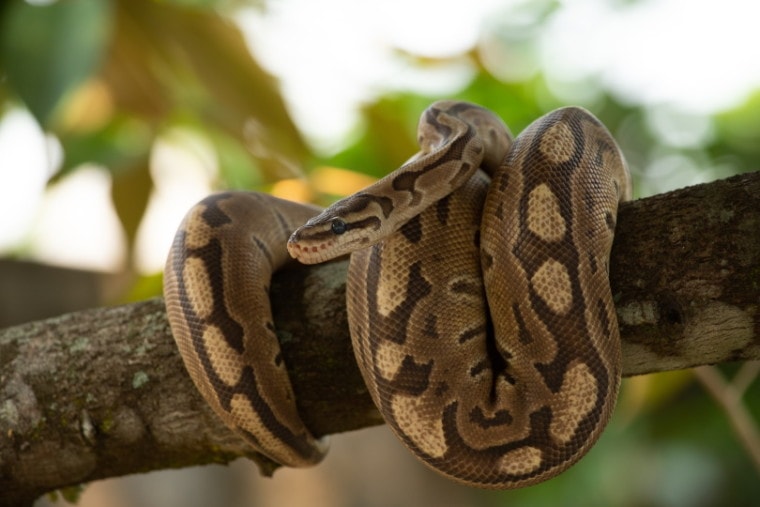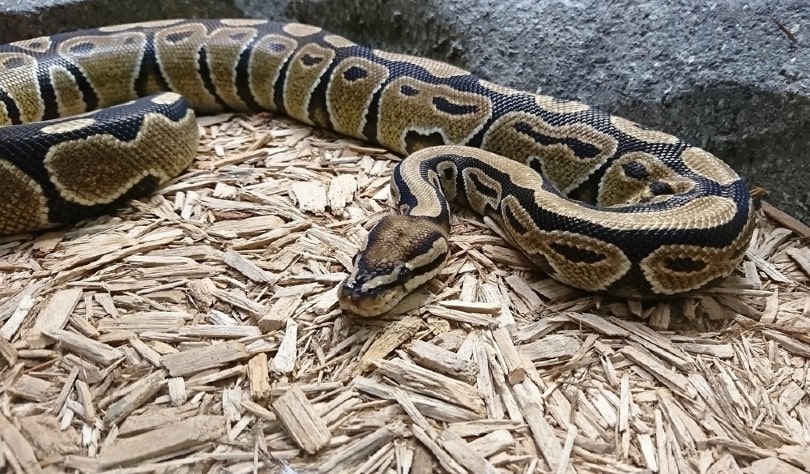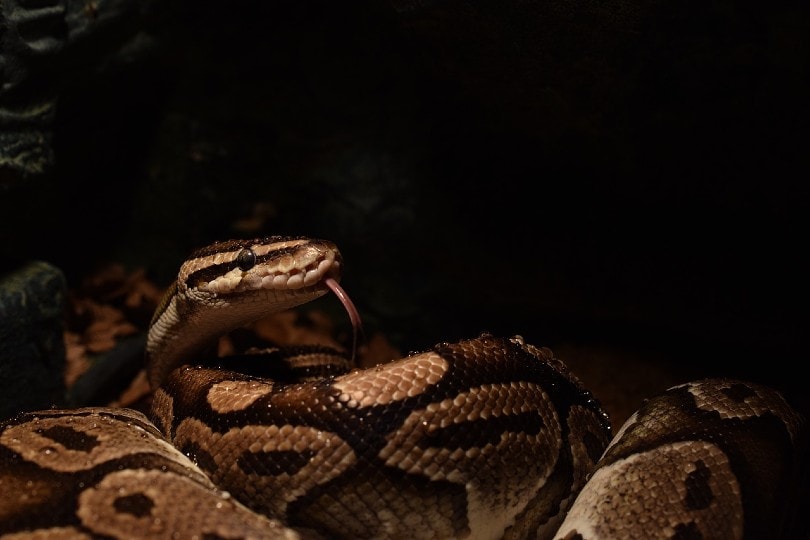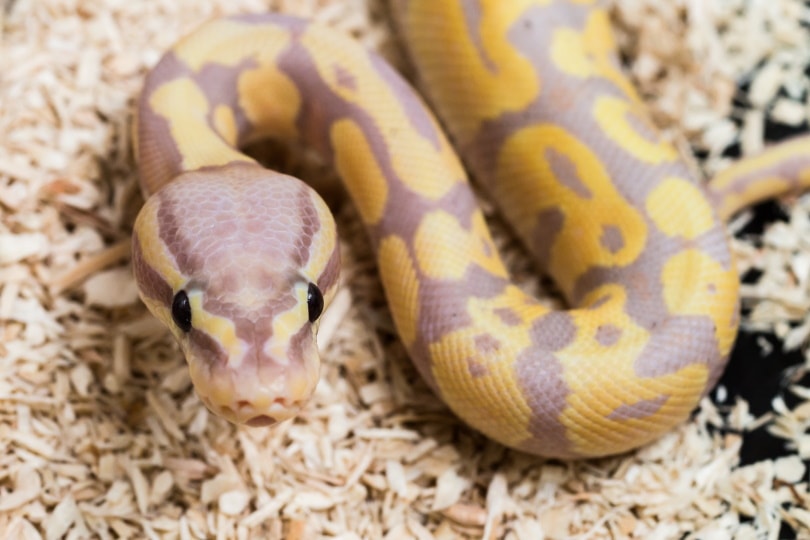
Ball Pythons are one of the most popular pet snakes in the world due to their gorgeous morphs, ease of care, and docile temperaments. Their enclosure is also relatively simple to set up and maintain, requiring only heating and the correct humidity. As most Ball Python owners know, these pythons need a temperature gradient in their enclosure to enable them to thermoregulate, and this is usually done with a heat lamp. But do Ball Pythons actually need a heat lamp?
Heat can easily be provided for your Ball Python via heat pads, heat tape, and radiant heat panels. So while heat lamp may not be necessary, it is arguably the best option for beginner python keepers, since it is the simplest and most inexpensive method of creating a temperature variation.
Heat lamps are useful, but there are other options too. Let’s look at when heat lamps are useful, why pythons may need them, and other ways to provide them with a temperature gradient.
Optimal Temperatures for Ball Pythons
Ball Pythons are cold-blooded, so they require an external heat source to maintain their body temperature, which would be the sun or a hot rock in nature. This is vital to their metabolism and overall health. Giving them multiple heat sources will help them regulate their body temperatures themselves, as they would in the wild.
In your Ball Python’s enclosure, you’ll need to have an ambient temperature of 82–86 degrees F, with a basking spot on one side of 95–105 degrees F. At night, the ambient temperature should ideally drop to 72–78 degrees F. It’s highly recommended to keep track of the temperature with a good-quality thermometer and have a timer that will switch off whatever heating you’re using if the temperatures get too high. One of the easiest ways to provide this basking spot and temperature gradient is with a heat lamp, but there are other options too.

Heating Your Ball Python’s Enclosure
When it comes to keeping the correct temperature inside your Ball Python’s enclosure, there are several options. The best way to keep a constant ambient temperature is with an under-tank heater, but if you live in a warm area with fairly consistent temperatures, this may not be necessary. These heaters are inexpensive, reliable, and easy to find online or in pet stores and closely mimic what your python would experience in the wild. Heating tape is also a great option, although it is typically more expensive.
A combination of under-tank heating combined with a heat lamp and regulated by a thermostat is arguably the best method of heating your snake’s enclosure.
Do Ball Pythons Need a Heat Lamp?

Even if the temperature in your home is in the correct range, you’ll need to maintain a constant temperature throughout the year, so a heat lamp is a great idea to help keep your snake’s enclosure warm. Heat lamps are different from fluorescent or LED lights, which are used more for viewing purposes, in that they generate a substantial amount of heat. Even without an under-tank heater, a heat lamp can usually provide all the heat that your python needs. Of course, this also depends on the size of your tank, and you’ll need to make sure you get an appropriately sized lamp. A lamp that is too high wattage for your enclosure could easily harm your python.
You’ll need to place the lamp about 6 inches from the top of your python’s enclosure, ideally with a mesh screen between the bulb and tank to prevent burns. It’s also a great idea to place moss or moisture-absorbent cypress mulch on the same side as your heat lamp, as this can also help maintain the humidity in the tank, an important factor in the overall health of your python.
One of the main downsides of heat lamps is the bulb. If you have your lamp on a timer to mimic day/night cycles, this constant switching on and off can be hard on the bulb, and it may burn out fairly quickly, meaning you’ll need to replace it every few months.
Do Ball Pythons Need a Day/Night Cycle?

Ball Pythons are largely nocturnal, and while many python owners claim that a day/night cycle is unnecessary for a python, it will mimic their life in the wild. A normal 12-hour on/off cycle is best — unless you intend on breeding — because it provides them with consistency, promotes natural behavior, and is easy to maintain with a simple, inexpensive timer. Without this consistent cycle, your python may become stressed, and it may even cause eating issues, especially if your python is accustomed to a certain amount of darkness.
Of course, this day/night cycle would mean your heat lamps need to be switched off at night, and this is the reason that many people keep the lights on all the time. This is simply solved with a heat pad that will maintain the ambient temperature while the lamp is off.
- See Also: Do Ball Pythons Recognize Their Owners?
Final Thoughts
While Ball Pythons may not require a heat lamp, using one has many advantages. With a heat lamp, it’s easy to maintain the required temperature gradient for your enclosure. It will also provide a nice basking spot for thermoregulation, can help maintain humidity, and will help keep your python’s tank warm in general.
Featured Image Credit: BikerPhoto, Shutterstock







